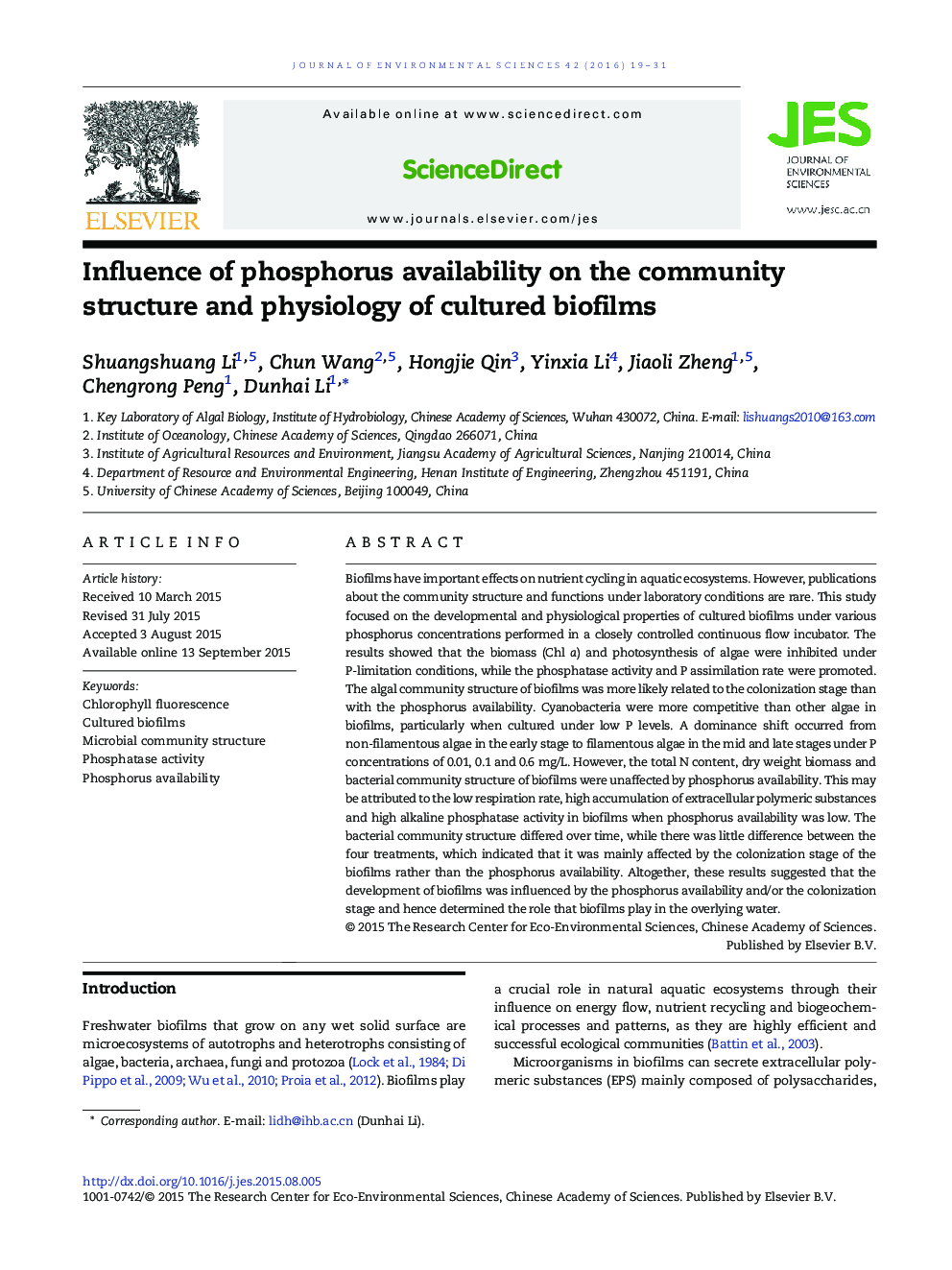| Article ID | Journal | Published Year | Pages | File Type |
|---|---|---|---|---|
| 4453787 | Journal of Environmental Sciences | 2016 | 13 Pages |
Biofilms have important effects on nutrient cycling in aquatic ecosystems. However, publications about the community structure and functions under laboratory conditions are rare. This study focused on the developmental and physiological properties of cultured biofilms under various phosphorus concentrations performed in a closely controlled continuous flow incubator. The results showed that the biomass (Chl a) and photosynthesis of algae were inhibited under P-limitation conditions, while the phosphatase activity and P assimilation rate were promoted. The algal community structure of biofilms was more likely related to the colonization stage than with the phosphorus availability. Cyanobacteria were more competitive than other algae in biofilms, particularly when cultured under low P levels. A dominance shift occurred from non-filamentous algae in the early stage to filamentous algae in the mid and late stages under P concentrations of 0.01, 0.1 and 0.6 mg/L. However, the total N content, dry weight biomass and bacterial community structure of biofilms were unaffected by phosphorus availability. This may be attributed to the low respiration rate, high accumulation of extracellular polymeric substances and high alkaline phosphatase activity in biofilms when phosphorus availability was low. The bacterial community structure differed over time, while there was little difference between the four treatments, which indicated that it was mainly affected by the colonization stage of the biofilms rather than the phosphorus availability. Altogether, these results suggested that the development of biofilms was influenced by the phosphorus availability and/or the colonization stage and hence determined the role that biofilms play in the overlying water.
Graphical abstractThe phosphorus availability on the community structure and physiology of cultured biofilm was investigated using a closely controlled continuous flow incubator. With the development of biofilm, cyanobacteria were more competitive than other algae in biofilms, particularly when cultured under low P level. However, the bacterial community structure differed over time while with little difference between four treatments. Altogether, the development of biofilm was influenced by the phosphorus availability and/or the colonization stage and hence decided the role of biofilms played on the overlying water.Figure optionsDownload full-size imageDownload as PowerPoint slide
